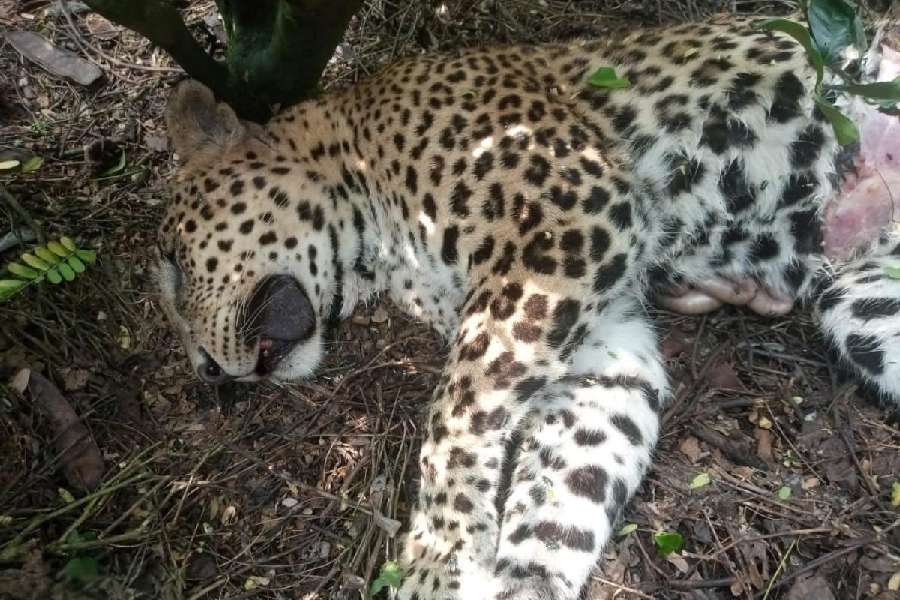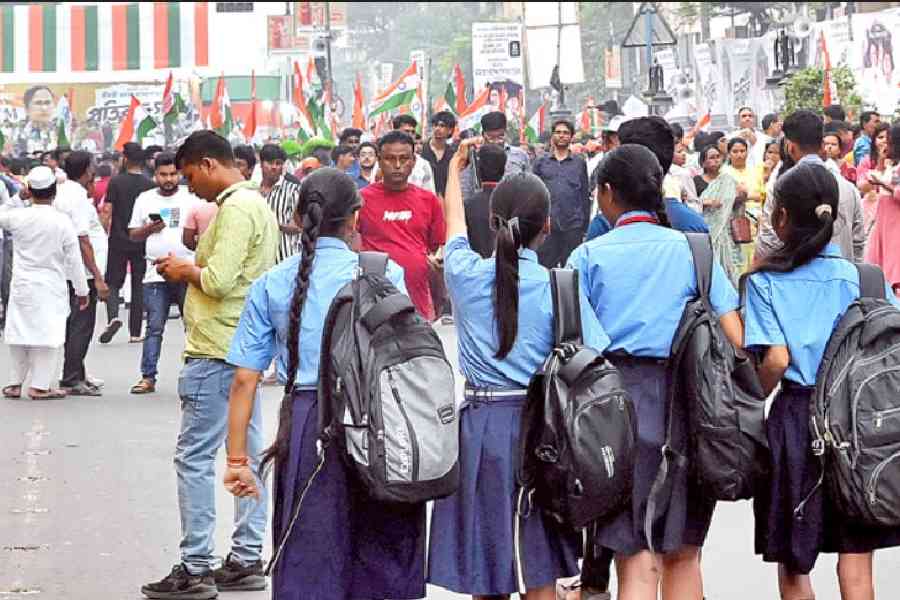|
|
What does the term, ‘primitive tribe’, conjure up in one’s mind? Ever since Rahul Gandhi became the self-proclaimed sipahi of the Dongria Kondhs of Niyamgiri hills, we have been treated to photographs of a smiling Gandhi posing with blushing tribal girls in their traditional dress. In the pictures, the latter indeed look like “museum pieces”, the phrase used for the Jarawas by Bishnu Pada Ray, the MP from Andaman and Nicobar islands, when he objected to the forced isolation of this primitive tribal group and demanded that it be brought into the mainstream. With the images of Gandhi’s Niyamgiri tribals fresh in my memory, I went looking for West Bengal’s very own primitive tribe, the Totos of Totopara in Jalpaiguri district, half expecting to find a people like the Jarawas, resolute and independent in their ways, touchingly attached to their customs and land, shying away from contact, and occasionally hoping for the passing knight of Gandhi’s ilk to carry their news to the greater world.
I should have known better, for the Totos are already going places, quite literally. Recently Rita Toto, 22, made headlines when she became a graduate, the first woman from her tribe to earn the distinction. When I called her up (almost all the Totos carry cellphones) to fix an interview at her home, she informed me that she would be travelling to Calcutta to explore further career options. Disappointed, and somewhat rebuffed, I decided to make the journey to Totopara nonetheless to learn the ways of life of Rita’s tribe, which seemed primitive and modern at the same time. (I caught up with Rita later, not in Totopara, but in Madarihaat town, where she had halted en route to Calcutta.)
Totopara, falling under the Madarihaat subdivision of Jalpaiguri district, is a study in contrasts. I approached the village through mountainous paths, dense forests, flowing rivulets, and the first thing I encountered on entering it was a man washing an SUV. Thatched bamboo huts on stilts, which, I learnt later, were the traditional houses of the Totos, were interspersed with concrete and wooden houses, on some of which workers were laying roofs of corrugated sheets. Totopara boasts of a primary school, a high school, a hostel for students, a primary health centre, a hospital with an attending MBBS doctor, and a Grameen Bank. With almost all the shops displaying the familiar boards of cellular phone companies, Totopara could have been the ideal global village. Yet as soon as it rains in the Bhutan mountains, at whose foot Totopara lies, the two rivers flowing past the approach to the village begin to swell up, and Totopara is cut off from the world.
Naved Akhtar, the block development officer of Madarihaat, says that communication is the chief problem for the Totos, especially during the long monsoons in the Dooars. But the state government is all for the Totos, and a flyover connecting the navigable road at the rivers’ end with the village is part of its future plans for Totopara. In the meantime, government officials remain active in the village, distributing ration cards, pension and scheduled-tribe certificates. Under the backward classes welfare department’s housing development scheme, Amar Bari, Totos with a monthly income of less than Rs 8,000 are being helped to build their own houses. That explained the brick houses with tin roofs.
Bhabesh Toto, one of the well-to-do villagers, who has a pucca house as well as a guesthouse for tourists, said that the Totos’ traditional huts have become a liability since they require frequent thatching — and bamboos, as well as straw, are expensive nowadays. Then there is the problem of land ownership. A concrete house being more permanent than a bamboo hut, those who can afford the former go for it to firmly establish their rights on the land.
I was surprised to learn that there are more Nepalis than Totos in Totopara. There are also Marwaris, who own most of the shops, and Biharis, who, according to Bhabesh, are largely into moneylending. Poorer Totos keep losing their lands to the richer classes from other communities, and it is perhaps in this context that the debate over endogamy, which is one of traditional practices of the Totos, acquires a different dimension.
In 2009, the Netaji Subhash Chandra Bose Cancer Research Institute of Calcutta identified thalassemia resulting from endogamy as one of the chief reasons behind the low life expectancy of Totos, whose population has never exceeded 1,400. Totos who marry outside the group are excommunicated. But as a natural result of sharing space with other communities, many Toto men have already married outside the tribe. Now the Toto girls are being zealously guarded. Although no Toto woman till date has married an outsider, someone just might, and then not just the tribe’s identity, but, more important, its lands, would come under greater threat.
Education has proved to be a double-edged sword for the Totos. It has made them more aware of their rights on the one hand and, on the other, has made them realize some of the practical disadvantages of their beliefs. According to Biswajit Saha, who has worked for the local panchayat samiti’s education department, even primary school children in Totopara know the truth about thalassemia today. The kaizis, village chiefs, stick to their customs, but, being aware of the possible health and economic hazards of endogamy, are not unwilling to bend the rules.
Most of them look mildly amazed when asked about the traditions of their tribe. Yes, they have their own gods, who represent natural forces, but there is no sacred space, no Niyamgiri hill, dedicated to the deities. The ‘temple’ is more of a community hall where villagers meet to eat, drink and dance during festivals. “The gods have moved from the outside to the insides of households,” says Bhakta Toto, who works for the Grameen Bank. There are village shamans, but when the Totos fall sick, they largely repose their faith in the doctors working for the PHC. Farming in oranges, ginger, cardamom and betel nuts may constitute the Totos’ traditional sources of income, yet nowadays many hold government jobs and the educated younger lot is migrating outside the village for better opportunities. And notwithstanding their animistic beliefs, the Totos are cleaning the surrounding forests of trees, inviting an ecological disaster upon themselves.
The elders concluded all conversations by dutifully reiterating the need to preserve their vanishing customs, while looking relieved that the interrogation about their beliefs was over. The younger men emphasized how their ST cards do not always fetch them jobs, especially when they have to compete with other, more advantaged ST groups.
Ultimately, the ‘contrasts’ that Totopara offered were all made up of the differences between the actual Totos and my expectations of them as a primitive tribe. In speaking to the kaizis, I often felt like Wordsworth grilling the leech gatherer, desperately trying to make him stand for something he was not. Sometimes, it takes a visit to a place to find the true meaning of terms and the reality that photographs exclude.











